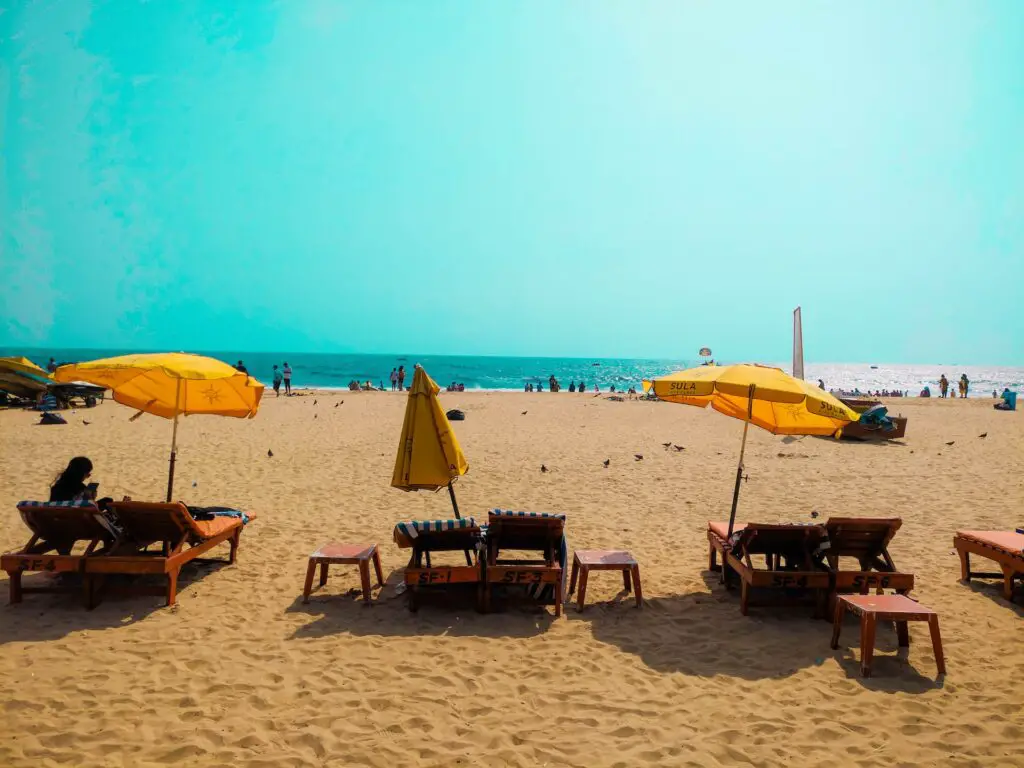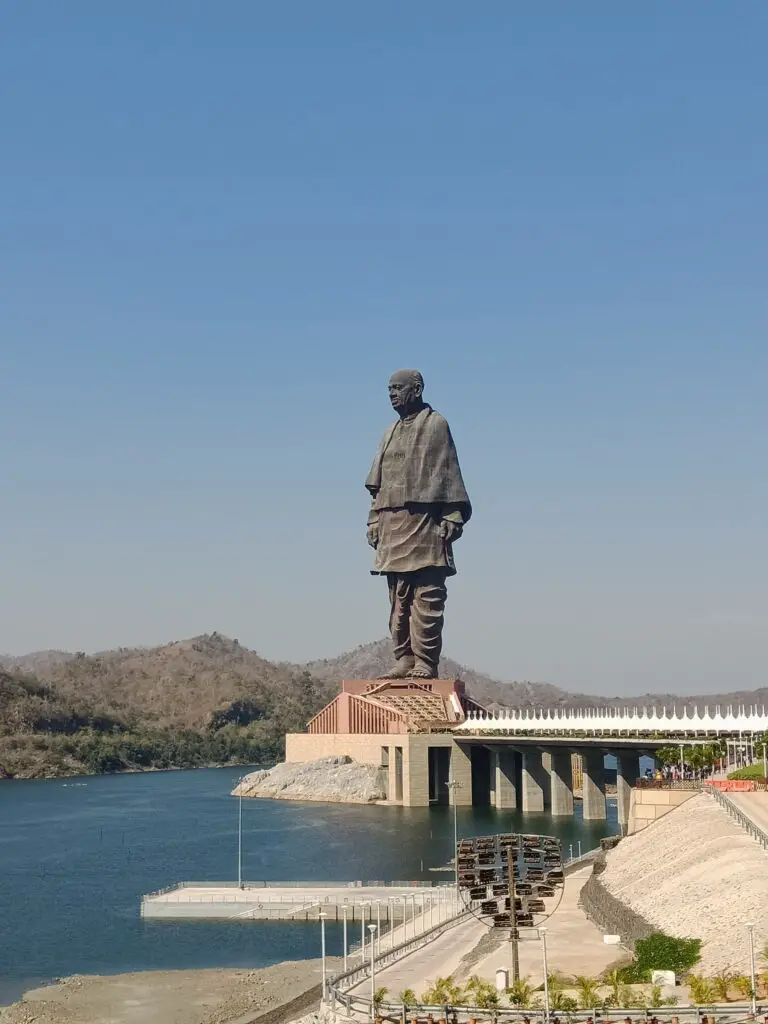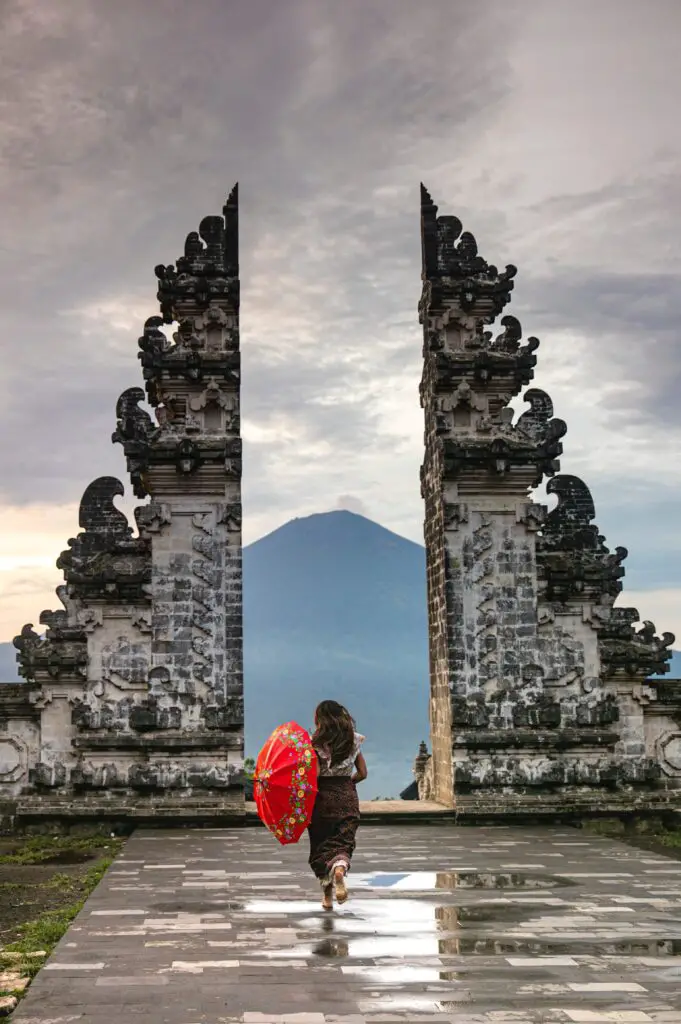
If you are a person who keen to indulge in both natural along with ancient landmarks, then Pamukkale, will be on your great choice. Pamukkale, is a Turkish city often called as a “Cotton Castle” in Turkey language. City labelled for a good number of pools, mineral-rich waters, slopes, waterfalls, and natural landscapes. Recognized by the UNESCO World Heritage Site, city contains well preserved ancient places. Out of landmarks many travel benefits, its mineral rich thermal water natural pools is the prime options for many visitors.
Hierapolis is a more visited place within the Pamukkale region. It would take back in time, to the ancient Roman city of Hierapolis. Known for the therapeutic positive advantages under its thermal hot waters, including soaking or bathing in warm water which adversely affect many health and skin diseases. It symbolizes the testament to the fascinating forces of nature and the rich history of human civilization that thrived in this region.
Warm Mineral water with rich calcium deposits and natural pools in travertine rocks are on the natural side, and ancient Roman theatres, ruins of Hierapolis historical sites are another side welcomes visitors around the world. So, let’s discuss further more about Pamukkale and things to do there. As a traveler, never miss the opportunity to read the articles below.
Related Search: Blue Lagoon, Iceland.
Top 10 Things to Do in Pamukkale to a Backpacker
1. Explore Hierapolis Ancient City

Hierapolis is situated in Buyuk Menderes, the Present city of Denizli, Pamukkale. Known as the Phrygian Faith centre of God’s mother of Anatolian. A World Heritage Site, it is influenced by many religion sections including Christians, Romans, Jews and Pagan. During the 2nd century, most of the constructions took place, including its renowned Museums, Theatres and Large stone baths.
Hierapolis was an ancient important religious center during the Roman Empire, contains several good churches which date back to the 5th century. The city was built around natural hot springs, where temples are dedicated to Apollo, Artemis, and Leto. Today this “Holy City” witnessed well-preserved ruins, including the ancient theatre, Necropolis, and the ancient pool with submerged columns.
2. Walk on the Pamukkale Travertines

Travertines are simply called Limestone or Marble in general words. But, when we talk about Pamukkale Travertines, it often considered as the unique travertine terraces, formed by content-oriented mineral-rich waters cascading down the hillside, create a stunning white landscape or areas. You can easily walk in spotless terraces or walk barefoot on the terraces, to experience it healing properties.
Recognised by the UNESCO World Heritage site, which flows from white terraces to deep valleys. Calcium, Magnesium and bicarbonate are core minerals included in this travertine. Turkish people believed that this white area could be the 8th wonder of the world. Visitors need to pay 700 Turkish Liras, to enter this Pamukkale white terraces.
3. Take a Dip in Cleopatra’s Pool
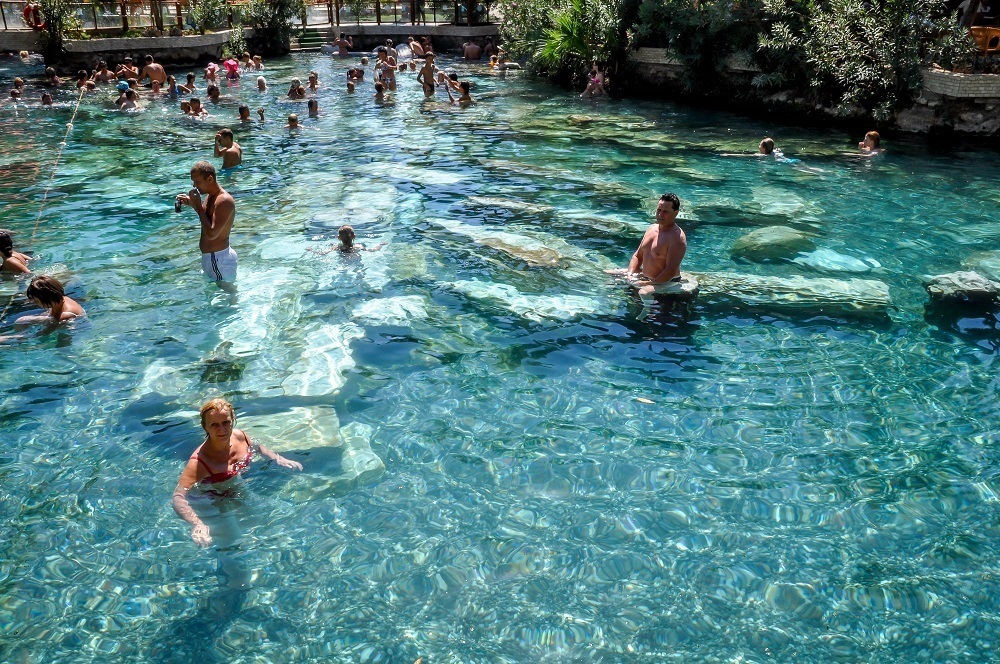
Located within the Hierapolis Archaeological Site, Cleopatra’s Pool is a thermal hot spring where hydrotherapy and spiritual practices were held during the Roman Empire. You can also swim surrounded by ancient ruins. This 3.5-foot depth pool contains a high calcium content of water and water is believed perfect to maintain good rejuvenating experiences and cure skin related problems. Since pool have ideal temperature of 36°C, visitors can swim or dip in pool. Calcium, Magnesium and bicarbonate are core minerals included under travertine.
A UNESCO World Heritage Site, where 250 tourists can swim at a time. Cleopatra’s Pool is mainly divided into 3 sections, to reduce traffic, such as the Pamukkale Region, Pamukkale Travertines and Cleopatra’s pools (only places to swim or soak in Clyster clear water). Interestingly, its water is constantly filled by the underground water.
Vrbo Company Logo and Tagline.
4. Visit the Hierapolis Archaeology Museum

While exploring Pamukkale historical evidences, never miss to take a stop at Hierapolis Archaeology Museum which is considered as more interesting and curious place to learn more about the region’s past. Located near the white cliff pools and antique pool, museum help us to learn about the history, culture, and artefacts discovered during the Hierapolis period. You can see statues, jewellery, ceramics, and architectural remains during the era of the Roman Empires. Along with, it contains a gym, library and Roman baths, the legend of Marsyas and the Hall of Sarcophagi more common ruins available to discover.
Enclosed in the Roman Bathhouse, contains 3 different parts; collections of artefacts, found near Hierapolis and another one is Aphrodisias, found in Roman statues from the Academy of Aphrodisias, the final one is a huge sarcophagus. Goddess Cybele, Attis Statue and Isis the Egyptian god are beautiful yet interesting elements under Hierapolis Archaeology Museum.
5. Discover the Sacred Pool
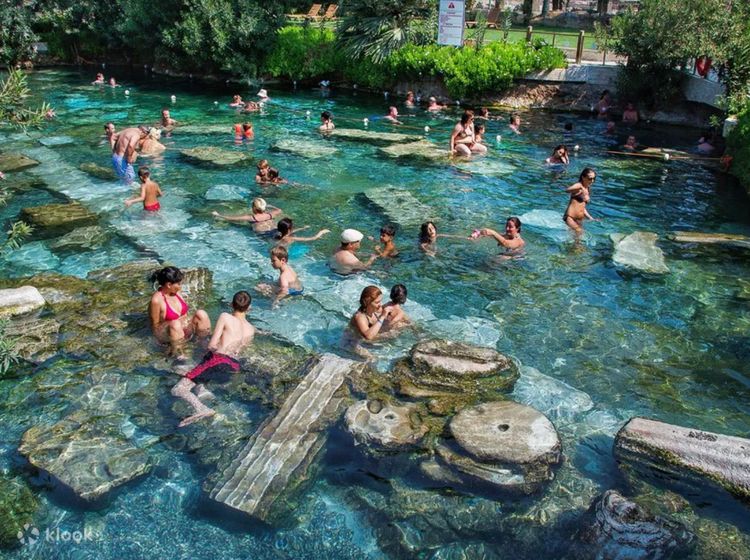
Located within the Hierapolis Ancient City, the Sacred Pool is labelled for its thermal waters and healing properties. Soaking in the pool or bath in the Ancient Roman bath complex is the most attractive thing to do in Pamukkale. Don’t try to swim in an ancient pool or column of mineral-rich water, just relax in the warm water and enjoy surrounding archaeological treasures. While soaking in hot water, do not miss out to enjoy beautiful views of the Apollo temple, ancient fountains, and theatres. Perfect place, where hot thermal water comes out.
During Ancient times, this Sacred Pool was preserved by the Roman Empire, from its rare and unique natural feature, mineral content and the Spa city of Hierapolis. It continues its legacy even today with its same features, as a public swimming pool. Make sure that this pool too need certain amount of fees to swim.
Suggested Read; Airbab Hospitality Company.
6. Explore the Travertine Terraces at Sunset

A crucial thing to do in Pamukkale is to watch the sunset over the travertine terraces. It witness the changing colours and the stunning natural beauty of the area. Due to the temperature, which varies from 35° C to 100°, so friendly to soak in water during sunset. Nevertheless, area also covered by the more than 15 unique hot springs which are more interesting to see during sunset and each one are contains rich mineral content water. Pamukkale Terrace is made of travertine, it is a sedimentary rock deposit, dating back to the 5th century.
It is very important to enjoy the beauty of Pamukkale during sunset. Often known for photographers paradise, due to its interesting views under beautiful hot springs. Take a glimpse of perfect capture while enjoying mineral water.
7. Soak in Karahayit Thermal Hot Springs
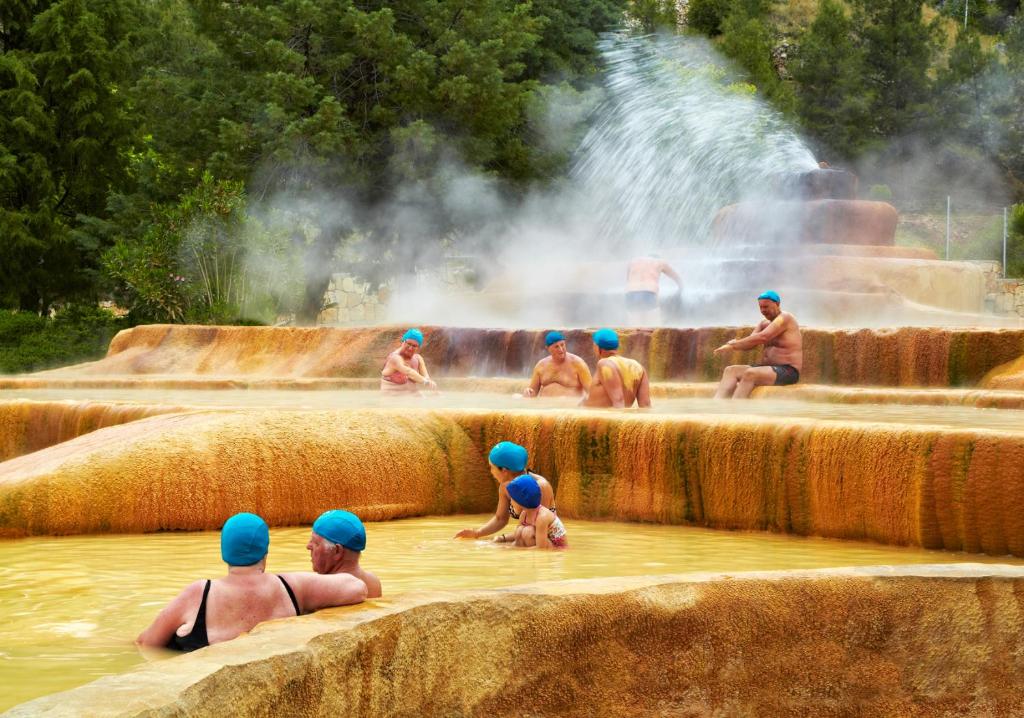
Located just in the outer area of Pamukkale, Karahayit offers thermal hot springs known for their therapeutic properties. Karahayit contains a total of 5 hot springs and red-coloured travertines. Naturally, its water being influenced by the iron salts obviously water colour is in brown and yellow combinations. 67°C temperature will inspire a relaxing bath within its warm mineral waters and experience the healing effects too. Due to the high temperature, you can’t directly jump to these thermal springs.
Therapeutic advantages are held by these thermal waters, which positively affect gastritis and stomach ulcer problems including minor skin related illness. You will get both cold and hot water in outdoor pools here in Karahayit. Exploring Karahayit Thermal Springs with healing mud wraps, fast dips, cold showers and treating varicose veins are things to do in thermal springs.
Suggested Read; Great Barrier Reef, Australia.
8. Take a Hot Air Balloon Ride
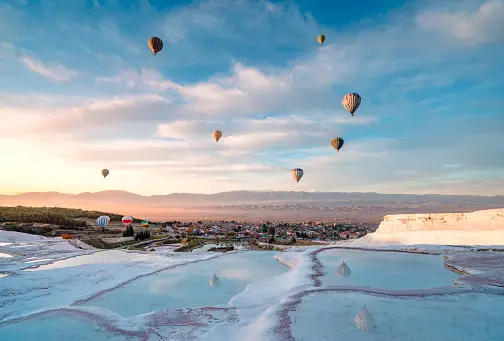
A Hot Air Balloon will be a perfect choice for a visitor to see the entire Pamukkale in an aerial view in just 1 hour. Total 35 minutes to 1-hour bird’s-eye view of Pamukkale and the surrounding unique landscape, consider taking an above the terraces and enjoying panoramic views of the stunning scenery. During sunrise and sunset, the Hot Air Balloon ride will be the next-level travel experience in Pamukkale. One of the cheapest balloon rides compared to other Cappadocia landmark
This too help to explore and watch fantastic panoramic views of nearby Hierapolis ancient city, Pamukkale Travertines and Roman Theatres. The normal capacity of a Balloon basket will be around 16 to 24 people at a time. £70 they will charge per person along with pick up and drop, champagne toast and 1-hour incredible aerial view journey.
Read more about; Whitehaven Beach, Australia.
9. Visit the Ancient Roman Theatre

The most exciting and exploring place under Pamukkale is the Roman Theatre. Situated in Hierapolis, the Ancient Roman Theatre is a well-preserved architecture that once seated thousands of spectators. A UNESCO World Heritage Site, with a total 10,000 seating capacity is an impressive ancient architectural beauty with a fantastic vantage point at the top. Huge public theatres were constructed from time to time over a period of history.
The first phase of the construction was begun during the 1st Century AD and the end of the 1st Century BC. During these periods additional smaller stages of the doric facade are added. Lower seating areas were covered during the 3rd century onward. Built in the 4th century by the king Septimus Servusthe when theatre primarily used for games and water spectacles. A Hot Air Balloon ride will be the perfect way to see this theatre in an Aerial view. From 2009 – 2013 this ancient theatre was under restoration project by the Italian Archaeologist.
10. Enjoy Turkish Cuisine

Never miss to indulging yourself in the delicious flavors of Turkish cuisine. Turkey serves a massive number of both vegan and non-veg delicious foods to outsiders. Sample local specialties such as Dolma, Meze, kebabs, baklava, Turkish tea, and traditional Turkish breakfast, including olives, cheese, and pastries. Apart from food, you can taste unique styles of fruits, vegetables and dairy products. Turkey is also known for its most nutritious content-oriented foods.
Fried vegetables such as eggplant and pepper with tomato sauce are more common summer foods in Turkey and Pamukkale regions. Doner Kebab is a main Turkish food that has international recognition, whereas ‘Raki’ is an alcoholic drink, which is considered a national drink. Trying out some different foods in Pamukkale provides something of an unreal experience to visitors.
Parting Thoughts
Pamukkale, Turkey will be the perfect destination in the Middle-East region. Place contains good number of health-oriented benefits and healing properties, making it worth visiting destination to an backpacker. Soaking or bathing within Travertines and ancient pools will be unique travel feeling. From a traveler’s point of view, it is a pleasure to say, Pamukkale is not just a travel destination it is also a natural doctor. Do not miss to come with your family.
You Can Also Read; 7 Natural Wonders of the World.


